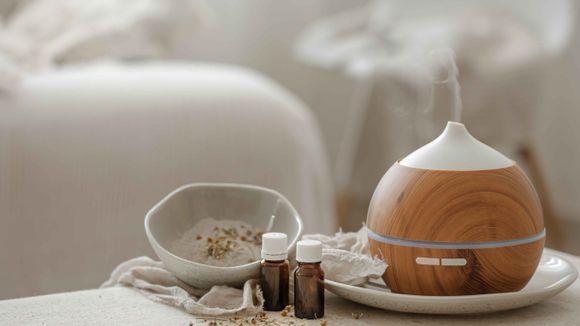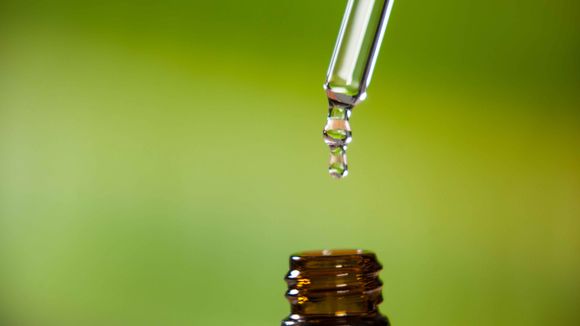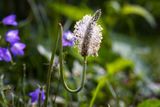Types of antifungal essential oils
Essential oils of herbs and spices are some of the most powerful antimicrobial essential oils. Thyme, cinnamon, oregano, cloves and mint are examples of some of the most commonly used antimicrobial oils.
Citronella, geranium, lemongrass, eucalyptus and mint, among others, have been tested specifically against fungi and found to be effective antimicrobials for this purpose. [ [ref. 1] ] Tea tree oil is another essential oil that has demonstrated its antifungal abilities in various studies. [ [ref. 2] ]
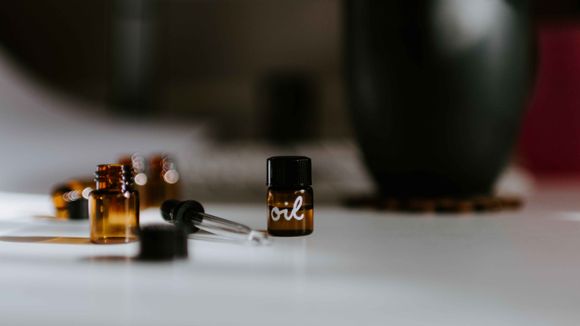
Thymus
Thyme is a common herb and is usually used as a spice, but it is also available in the form of essential oil. The healing properties of thyme are due to its essential oils, which are extracted by steam distillation of fresh flowers and leaves. The main ingredients of its essential oil are alpha-tuyon, alpha-pinen, campen, beta-pinen and others. [ [ref. 3] ]
Thymus essential oil is effective against fungi infecting humans. Its antifungal activity is mainly due to the high concentration of tymol and carvacol. It has been shown that thyme essential oil demonstrates inhibition of Candida albicans and Candida tropicalis, as well as Fusarium. Also, a study of Klarić et al. shows that molds such as Aspergillus spp, Penicillium spp and Cladosporium spp can be completely inhibited with a thyme oil concentration of 9.85, 19.17 and 15.20 μg/mL, respectively. [ [ref. 4] ]
Cinnamon (Cinnamomum verum)
Cinnamon oil is extracted from the bark or leaves of several types of trees, including the Cinnamomum verum tree and the Cinnamomum cassia tree. A study using bacterial cultures and laboratory tests found that compounds in cinnamon oil have an antimicrobial effect against Pseudomonas aeruginosa - a potentially life-threatening, drug-resistant bacterium that affects plants, humans and other animals. [ [ref. 5] ] Cinnamon has more proven antibacterial properties and can act synergistically in combination with antibiotic therapy. [ [ref. 6] ]
Also, only Cinnamomum verum, Thymus capitatus, Syzygium aromaticum and Pelargonium graveolens exhibit a wide range of action against various pathogenic candida strains, as commented in "Antifungal mechanism of the combination of Cinnamomum verum and Pelargonium graveolens essential oils with fluconazole against pathogenic Candida strains."
Origanum vulgare
Oregano essential oil can be a more powerful antifungal agent than other commercial products on offer. In addition, it can inhibit and assist the body in dealing with fungal skin infections, including mycosis and ringworm. [ [ref. 8] ] The antifungal effects of oregano essential oils (Origanum syriacum var. bevanii) and dill (Foeniculum vulgare) were investigated against Sclerotinia sclerotiorum in the study "Antifungal effects of essential oils from oregano and fennel on Sclerotinia sclerotiorum." [ [ref. 9] ] The inhibitory effects of both essential oils have a pronounced antifungal effect against S. sclerotiorum. Another in vitro study reveals the potential of oregano as an herbal antifungal agent against oral candida. The results here are encouraging - O.vulgare shows a 30±3 mm zone of inhibition compared to 19 mm for fluconazole (an antifungal drug). The active functional group has a chemically similar structure as carvacola, usually found in antifungal herbs. [ [ref. 10] ]
Clove (Syzygium Aromaticum)
Clove oil (Syzygium Aromaticum) has been shown to have strong antifungal activity against many types of fungi, including some common fungal pathogens of plants and animals, such as Fusarium moniliforme NCIM 1100, Fusarium oxysporum MTCC 284, Aspergillus sp., Mucor sp., Trichophyton rubrum and Microsporum gypseum. It has been established that all types of mushrooms are inhibited by oil when tested by a method of agar diffusion. [ [ref. 11] ]
Mint (Mentha)
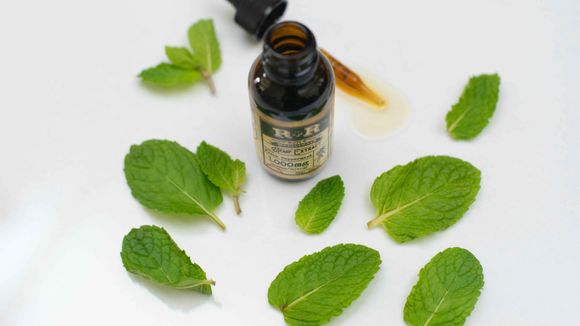
The composition and antifungal activity of the essential oil of Mentha cervina from Portugal analyzes the antifungal activity of mint oil. It is evaluated by minimal inhibitory concentrations (MIC) and minimum lethal concentrations (MLC) against Strains Candida, Apergillus and Dermatophytes. The antifungal activity of the sample containing lower amounts of poulegon is highest for dermatophytes, especially epidermophyton floccosum with MIC and MLC values of 0,63 microL mL (-1). Mentha cervina oils with a low poolegon content can be an alternative as antifungal agents in dermatophytosis. [ [ref. 12] ]
Mentha piperita essential oils collected from different provinces such as Turkey, Yakima, Mari-Linn Farms and others imported from India show stronger antibacterial activity against P. syringae pv. syringae, Pseudomonas syringae pv. tomato, P. syringae pv. phaseolicola, Xanthomonas campestris pv. campestris, and X. campestris pv. 0.07–1.25 mg/ml range of MIC values. [ [ref. 13] ]
Citronella (Cymbopogon Winterianus)
Citronella essential oil showed antifungal activity, and concentrations of 625 μg/mL and 1250 μg/mL inhibited the growth of all candida Albicans strains tested and acted fungicidally, as found in "Antifungal activity of Cymbopogon winterianus jowitt ex bor against Candida albicans." [ [ref. 14] ]
Lemongrass (Cymbopogon Commutatus)
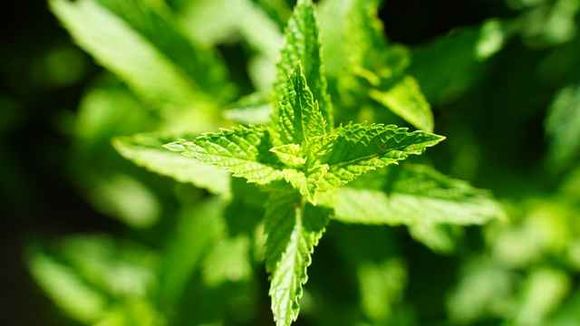
From the data in "Antifungal activity of Cymbopogon parkeri stapf. essential oil on some important phytopathogenic fungi" becomes clear that lemongrass essential oil has an antifungal effect on the growth of Rhizoctonia solani, Pyricularia orizea and Fusarium oxysporum, three types of phytopathogenic mushrooms. [ [ref. 15] ] Another study found data on the antifungal action of lemongrass oil against Candida albicans, C.tropicalis and Aspergillus niger, with different diameters of the inhibition zone. [ [ref. 16] ]
Eucalyptus
Leaves of the eucalyptus species are traditionally used to treat wounds and fungal infections. Essential oils and extracts of certain types of eucalyptus have antimicrobial and antitumor properties. For example, Eucalyptus sideroxylon and Eucalyptus torquata, grown in Egypt, exhibit antimicrobial actions against medically important gram-positive and gram-negative bacteria. Gram-positive bacteria are highly sensitive to oils and extracts of both types of eucalyptus. With the exception of Escherichia coli, gram-negative bacteria are resistant to extracts, but are sensitive to the oil obtained from at least one part of E sideroxylon and E torquata. Although Aspergillus flavus and Aspergillus niger are resistant to extracts, essential oils of E sideroxylon and E torquata usually show moderate to high antifungal activity against Candida albicans, A flavus and A niger. [ [ref. 17] ]
How to use antifungal essential oils
You can use antifungal essential oils topically to treat overgrowth of fungi on the skin. Choosing a mixture of two or three oils, along with base oil, such as coconut oil, is the optimal option.
Mix 2 to 3 drops of each oil together with 20 drops of basic oil, using something clean and disposable, such as a sterile cotton gauze swab to cover the affected area of the skin.
Make sure that you touch only the area that is affected by the fungus, so as not to spread them on healthy skin. You may need to apply the oils two to three times a day for a period of several weeks to see the results. These oils can also be diffused to refresh the air at home and create a more pleasant atmosphere.
